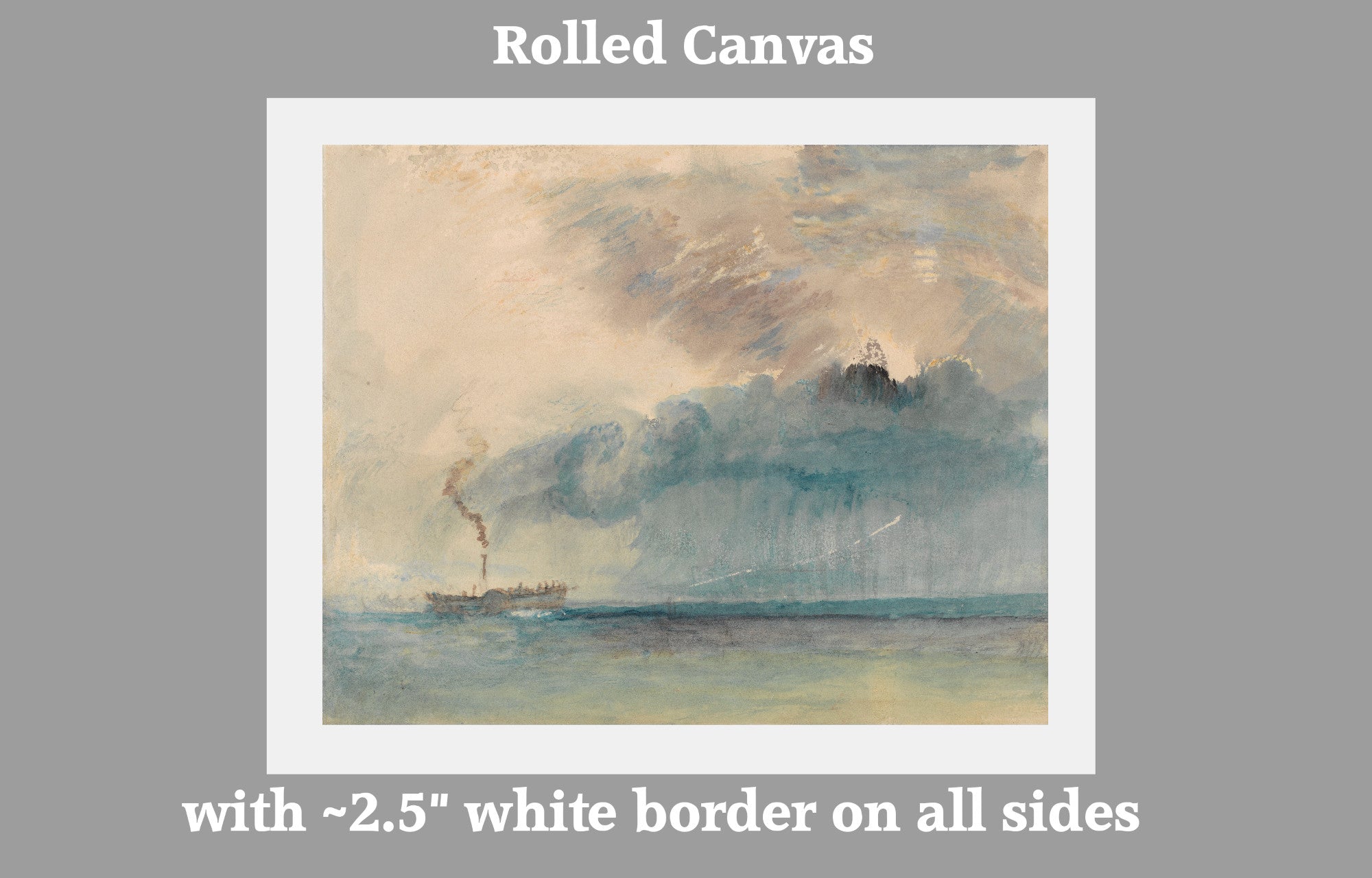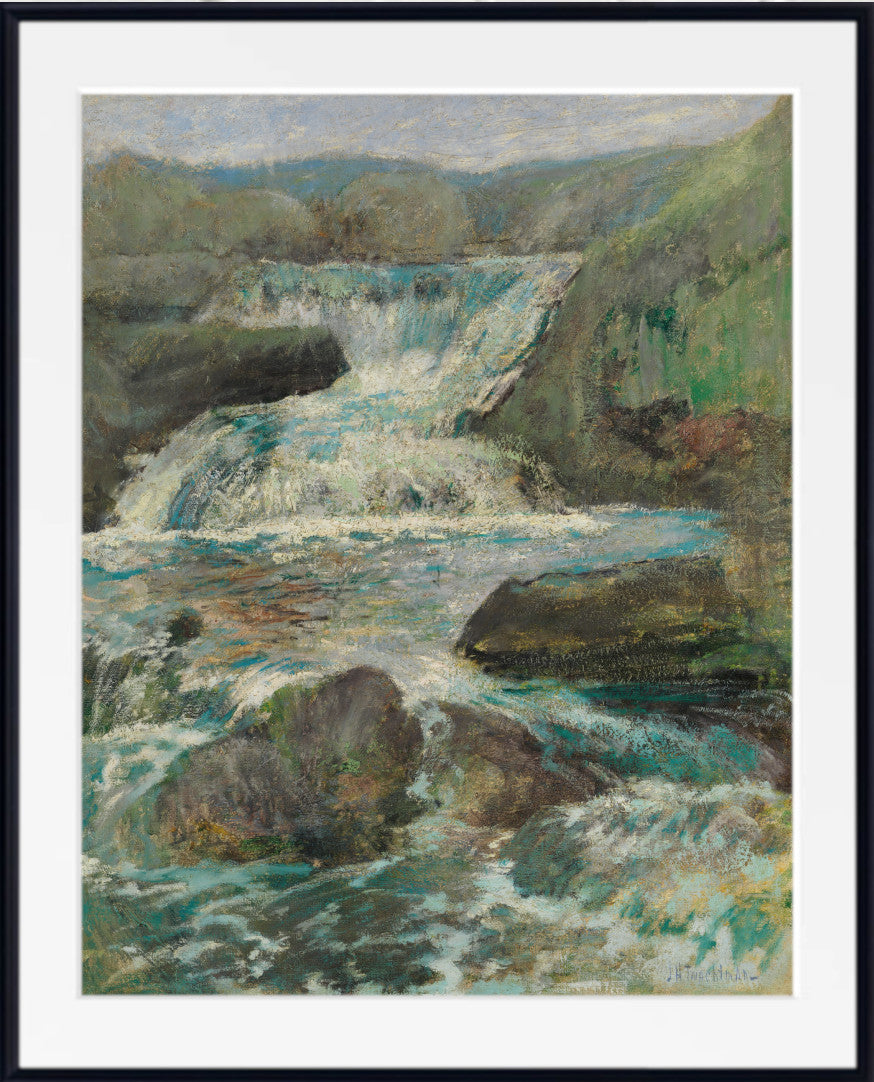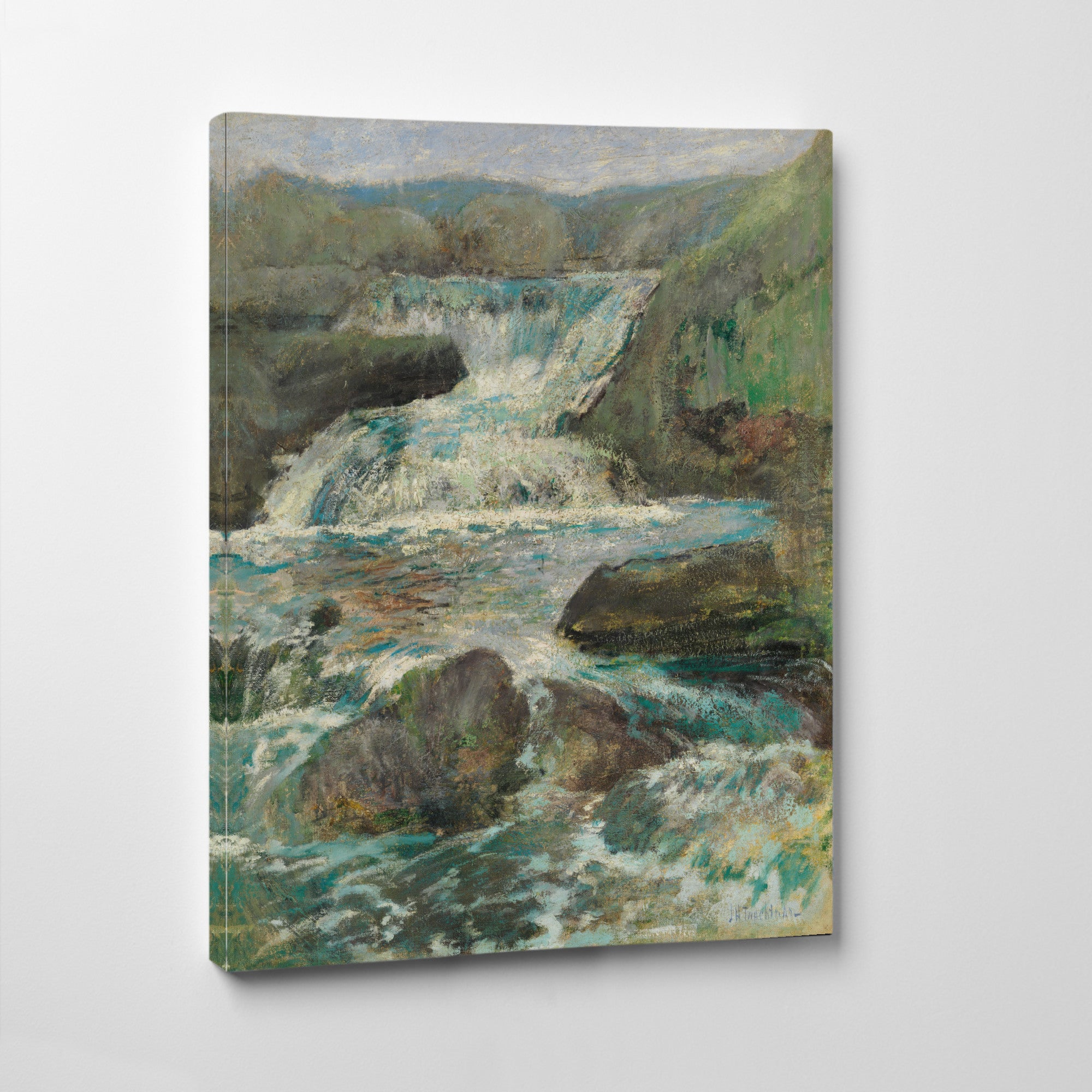A Paddle-steamer in a Storm, J.M.W. Turner
A Paddle-steamer in a Storm, J.M.W. Turner – Prints and Canvas Panels
J.M.W. Turner held a profound fascination for modern technology, particularly the steamboat, for both its aesthetic and practical merits. Introduced to Britain in 1801 and established as public transportation by 1812, the steamboat revolutionized travel. Turner, an avid sketcher, saw it as a means to explore a wider geographic canvas. His challenge was depicting the ever-moving air, which he often referred to as “the wavy air.” Steamboat emissions, notably black smoke, offered a unique artistic opportunity to trace air currents and embrace the modern era poetically.
From the 1820s onward, steamships became recurring subjects in Turner’s works. They represented technological progress, sometimes with an eerie or sinister undertone, as they battled the forces of nature. Initially, critics questioned the steamboat’s suitability for art, but by 1836, Turner was lauded for introducing “a new instance of the beautiful.”
In the featured drawing, a steamboat sails heroically through a fierce storm. Turner’s masterful use of scratching techniques vividly captures lightning flashes and churning foam beneath the vessel’s paddles. The exact date and location of this work remain uncertain, with suggestions ranging from Lake Lucerne to Turner’s 1830 visit to Staffa or his 1840 stay in Venice. Technically, it aligns with Turner’s works from the early 1840s, making this dating the most plausible. Turner’s fascination with steamboats reflects his deep connection to the evolving world of modernity, beautifully captured in this mesmerizing artwork.
All prints are made using archival art stocks and UV pigment inks to give up to 200 years life. Prints are sold unframed and unmounted.























